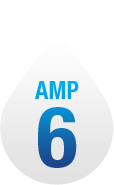Finham Tertiary Pumping Station
Client: CIM6Scale: 1/6
Feasibility study and concept design work was proposed by the Client to restore the six existing pumps, and install two further pumps of the same make, and specification to deliver the maximum design flow of 2887 l/s. The Client proposed to undertake the feasibility study through the use of Computational Fluid Dynamics (CFD). A further physical model study will follow the CFD modelling in order to confirm and refine the design, and to ensure full compliance with the ANSI standard.
This report covers Contract Part A, the baseline CFD model review and Contract Part C, the physical model study of the Finham Tertiary Pumping Station, the physical model was constructed to a scale 1/6th full scale and operated on Froud Law similarity.
Contract Part A – Feasibility study CFD analysis
The conceptual design and proposal of the pumping station was considered acceptable for this phase of the contract. Although the CFD model concluded that excessive preswirl, poor velocity distribution and the potential for vorticity would likely occur. While it is considered that the adverse effects would create an unsatisfactory pumping environment throughout the operating range, this is not considered to represent a flawed design.
Further to consultation with the Client, it was collectively agreed that Part B of the contract was not considered necessary. Therefore, progress of the analysis to Part C was agreed. As such, a physical model was constructed to a scale of 1/6th full size, where the recorded adverse effects were verified and confirmed. The physical modelling programme developed the design where considered necessary to correct the adverse hydraulic phenomena, with confirmatory testing demonstrating an acceptable pumping environment.
Contract Part C – Physical Modelling
Following the initial assessment on the physical model, numerous adverse effects were observed that included excessive pre-swirl, bulk air ingestion and submerged vorticity. It was considered that the following proposals improved the pumping environment. Therefore, the following proposals are required to achieve a satisfactory pumping environment. The suggested modifications are sympathetic to site constraints and no structural changes or relocation of the pumps are required.
• Suspended baffle inclusive of flow trippers – Testing determined that the flow entering from the high level inlet weir generated multiple areas of flow recirculation, combined with bulk air. The proposed suspended baffle will direct flow to the invert of the sump upstream of the suctions, hence a reduction in turbulence local to the pump suctions, and elimination the vertical plane recirculation. The horizontal flow tripper on the base of the baffle will induce vertical plane recirculation within the baffle and increase the flow path length of the entrained air so that it ascends to free surface prior to entrainment to the pump units. Upon assessment of the baffle at the minimum water level, it was determined that under 7 pump operation at a low level, the operative pump suctions were still entraining minor pockets of air. Therefore, two vertical flow trippers are proposed to block the path of the recirculation, and disrupt the vortices that were entraining bulk air from the free surface.
• Suction cone inclusive of preconditioning vane – Testing observed sub-surface vorticity forming on the invert of the sump and penetrating the pump suctions. The proposed suction cones suppressed the vorticity by denying a formation point to occur. The central vanes placed on top of the suction cones suppressed the flow rotation noted underneath the pump suctions, these vanes, therefore, created a more steady intake of flow absent of any significant turbulence.
• Rear central vane – Testing determined that flow recirculated around the rear of the pump units creating instability and the formation of coherent rear wall vorticity. The installation of a centrally located rear vane prevented flow from tracking the rear of the pump units uninhibited and reduce the frequency of rear wall vorticity formation.
Following the inclusion of the suggested modifications, the Finham Tertiary Feed Pumping Station demonstrated an acceptable operating environment, with the installed pump units operating in an environment devoid of any significant adverse hydraulic effects.
Satisfactory pump intake conditions were maintained under all anticipated inflow rates, and water levels. Pump intake conditions were free from submerged and surface vorticity, excessive jetting, or the ingestion of air. Pre-swirl rotation was kept well within acceptable limits, as specified in the ANSI standards, which equated to an angle of significantly below 5o.
Supplementary testing
The client requested that an alternative suction pipework arrangement was to be evaluated. The revision to the arrangement included transferring the pump to a horizontal position with a 300 mm diameter suction pipework, with a 400 to 300 mm diameter taper prior to entry to the drywell, and therefore, the pipework contained a single 90o bend within the sump. The proposed new suction pipework will relocate the suction centreline further into the sump by 245 mm. Hence the previously proposed modifications were to be extended to be in line with the alternative suction pipework. Therefore, the central rear vane was now be 480 mm from the rear wall, with the suction cone maintaining the same geometry.
Testing concluded that, the new proposed suction pipework arrangement demonstrated a compliant operating design, with improved flow distribution at the pump impeller position, in comparison to the original proposed arrangement. Furthermore, the pumping environment was devoid of excessive pre-swirl rotation and turbulence, with no submerged or surface vorticity present under any operating scenario, given the installation of the proposed modifications.







